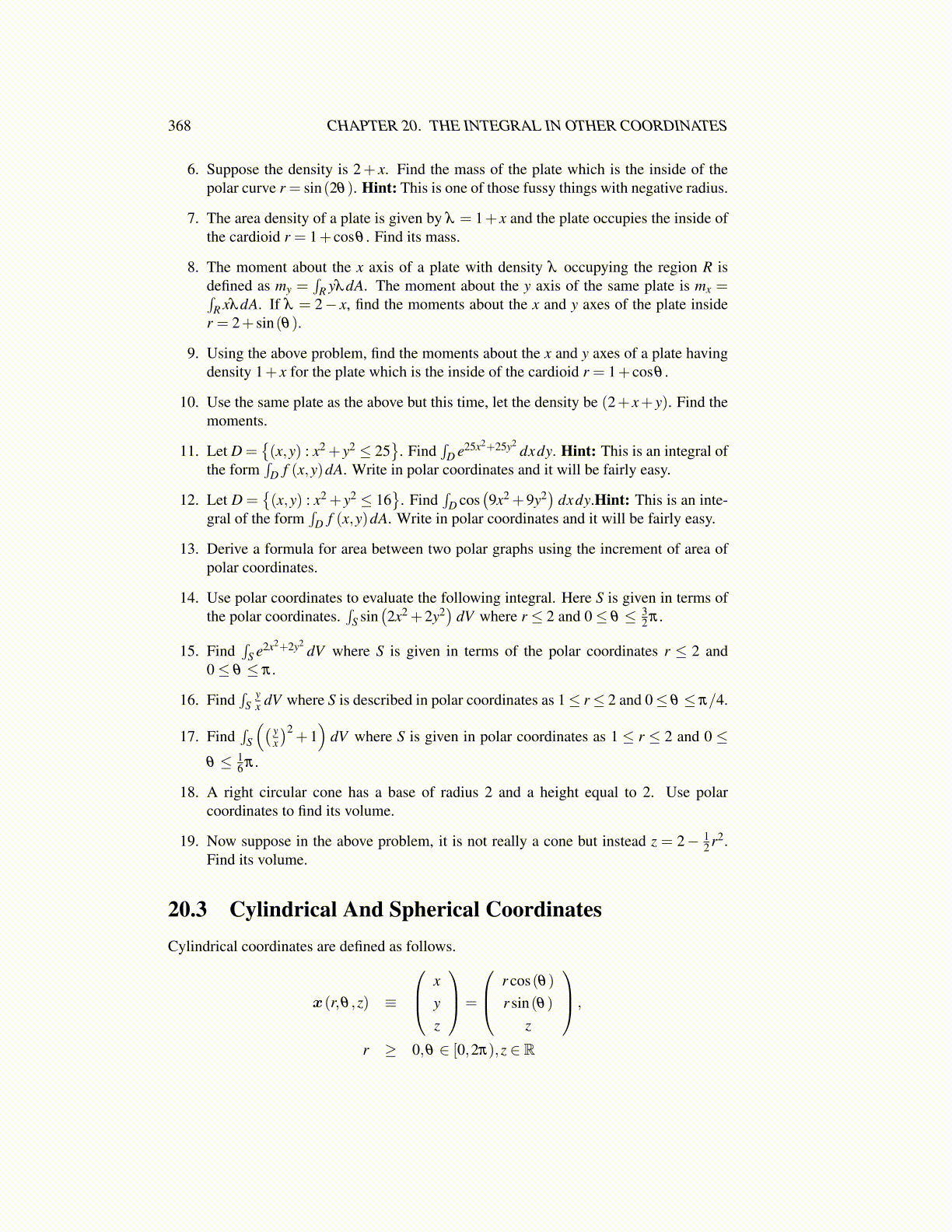
368 CHAPTER 20. THE INTEGRAL IN OTHER COORDINATES
6. Suppose the density is 2+ x. Find the mass of the plate which is the inside of thepolar curve r = sin(2θ). Hint: This is one of those fussy things with negative radius.
7. The area density of a plate is given by λ = 1+ x and the plate occupies the inside ofthe cardioid r = 1+ cosθ . Find its mass.
8. The moment about the x axis of a plate with density λ occupying the region R isdefined as my =
∫R yλdA. The moment about the y axis of the same plate is mx =∫
R xλdA. If λ = 2− x, find the moments about the x and y axes of the plate insider = 2+ sin(θ).
9. Using the above problem, find the moments about the x and y axes of a plate havingdensity 1+ x for the plate which is the inside of the cardioid r = 1+ cosθ .
10. Use the same plate as the above but this time, let the density be (2+ x+ y). Find themoments.
11. Let D ={(x,y) : x2 + y2 ≤ 25
}. Find
∫D e25x2+25y2
dxdy. Hint: This is an integral ofthe form
∫D f (x,y)dA. Write in polar coordinates and it will be fairly easy.
12. Let D ={(x,y) : x2 + y2 ≤ 16
}. Find
∫D cos
(9x2 +9y2
)dxdy.Hint: This is an inte-
gral of the form∫
D f (x,y)dA. Write in polar coordinates and it will be fairly easy.
13. Derive a formula for area between two polar graphs using the increment of area ofpolar coordinates.
14. Use polar coordinates to evaluate the following integral. Here S is given in terms ofthe polar coordinates.
∫S sin
(2x2 +2y2
)dV where r ≤ 2 and 0≤ θ ≤ 3
2 π .
15. Find∫
S e2x2+2y2dV where S is given in terms of the polar coordinates r ≤ 2 and
0≤ θ ≤ π .
16. Find∫
Syx dV where S is described in polar coordinates as 1≤ r≤ 2 and 0≤ θ ≤ π/4.
17. Find∫
S
(( yx
)2+1)
dV where S is given in polar coordinates as 1 ≤ r ≤ 2 and 0 ≤θ ≤ 1
6 π .
18. A right circular cone has a base of radius 2 and a height equal to 2. Use polarcoordinates to find its volume.
19. Now suppose in the above problem, it is not really a cone but instead z = 2− 12 r2.
Find its volume.
20.3 Cylindrical And Spherical CoordinatesCylindrical coordinates are defined as follows.
x(r,θ ,z) ≡
xyz
=
r cos(θ)r sin(θ)
z
,
r ≥ 0,θ ∈ [0,2π),z ∈ R